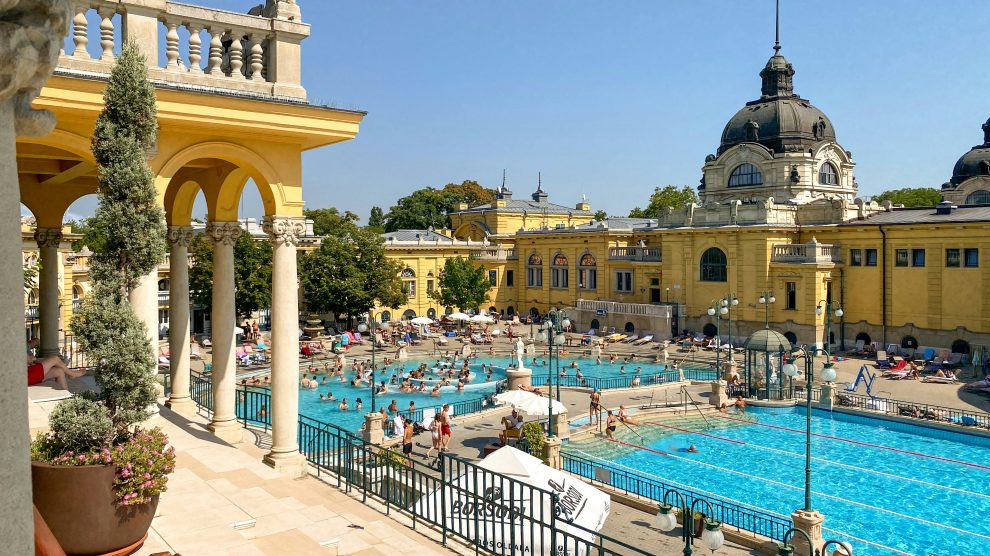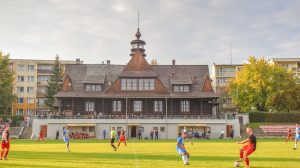Budapest is often hailed as a ‘City of Spas’—and not without reason. Sitting on hundreds of thermal springs, the city’s bath culture dates to Roman times, although it was during the Ottoman occupation of the 16th and 17th centuries that it flourished, when tens of bathhouses were built. Today, just four of the Ottoman bathhouses remain.
Contemporary Budapest offers a unique melding of historical grandeur with the therapeutic pleasures of the thermal waters that have served the city so well for centuries. Most of Budapest’s baths offer a large pool for swimming as well as a selection of smaller thermal pools ranging from merely warm to extremely hot. You’ll also find saunas, steam rooms and ice-cold plunge pools, while many baths offer spa treatments and massages. Several have outdoor swimming areas—some open year-round.
Indeed, from the historic Ottoman bathhouses to Art Nouveau splendour, there’s a bathhouse in the city for every taste. We pick five of the best.
Set in the heart of Városliget, or City Park, the iconic Széchenyi Thermal Bath (pictured above) is not only the largest in Budapest but also one of the largest spa complexes in Europe. Built in 1913 in a stunning Neo Baroque style, this bath became famous for its grandeur and the vast range of services it offers. What makes Széchenyi truly special however is its vast outdoor pool, which remains open and warmly inviting even during the often snowy Budapest winters. The sight of steam rising from the warm water against a backdrop of classical architecture makes for a somewhat surreal experience. Note that it can get impossibly busy in high summer.
Dating back as far as 1550, the Rudas Baths retain much of their original Ottoman architecture and unquestionable charm. The building is famous for its octagonal pool under a classic dome, supported by eight pillars—a design rarely seen outside Turkey. Rudas is also known for its unique offering of nocturnal bathing on weekends (until 3am), allowing visitors to soak in the healing waters under the stars, adding an element of romance and mystery to the thermal bathing experience. There are also Turkish steam baths in the building, with separate bathing times for men and women, and a ‘drinking’ room for those who wish to ‘take’ the (allegedly) healing waters that millions of Hungarians swear by.
Located within the equally famous Gellért Hotel (currently closed and undergoing renovation), the Gellért Baths (which remain open) are best known for their spectacular Art Nouveau architecture. Opened in 1918, these baths feature a main hall with a glass roof (one of the most Instagrammable spots in Budapest), originally designed to provide a sanctuary of relaxation under natural light. The Gellért can also boast original Zsolnay tiles, adding a vibrant, artistic flair to its interiors. Its thermal pools are supplemented by a range of therapeutic and leisure services, including what was one of Europe’s first wave pools.
Historically favoured by artists and intellectuals, Lukács baths have become a centre for Budapest’s literary and cultural life since their construction in the late 19th century (on the site of a much earlier Ottoman bath complex). The current complex includes multiple indoor and outdoor pools with varying temperatures, a sauna, a steam room, and massage therapies. One of the unique features of the baths is its weight bath, a special type of hydrotherapy used for stretching and relieving the spine and joints. Lacking much of the spectacular architecture of some of Budapest’s other baths, Lukács offers a quieter, perhaps more contemplative alternative.
And now for something a little different. Located on Margaret Island in the Danube (the island is itself worth a day’s exploring) this vast lido (it’s the largest outdoor swimming complex in the city), opened in 1919 and offers a blend of leisure, fun, and relaxation—mostly in the open air although there are a couple of indoor pools. There is a range of both thermal and regular swimming pools, water slides and activities for children—many of the city’s more traditional thermal baths are off limits to children. Also on Margaret Island is the Alfréd Hajós Swimming Complex, built in the 1930s (much of it in splendid Art Deco style) and named for one of Hungary’s first (of many) Olympic swimming champions.
Photo by Linda Gerbec on Unsplash.
Unlike many news and information platforms, Emerging Europe is free to read, and always will be. There is no paywall here. We are independent, not affiliated with nor representing any political party or business organisation. We want the very best for emerging Europe, nothing more, nothing less. Your support will help us continue to spread the word about this amazing region.
You can contribute here. Thank you.







Add Comment